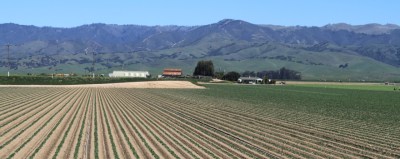How an integrated approach to water planning is helping the city of Roseville weather the drought with an eye toward the future

“By now, it is clear that California is experiencing yet another severe drought. In the Sacramento region, Folsom Lake — the city of Roseville’s primary water supply source — has dropped to levels not seen since 1977. Understanding the drought’s swift toll on the environment, the Regional Water Authority (RWA), which represents water providers serving two million people in the Sacramento region, asked members to start using more groundwater and take other actions to reduce reliance on local lakes and rivers. The city of Roseville responded almost immediately, thanks to its innovative approach to water supply planning called Integrated Regional Water Management (IRWM) and its partnership with the California Department of Water Resources (DWR). … ” Read more from Western City Magazine here: How an integrated approach to water planning is helping the city of Roseville weather the drought with an eye toward the future
Receding Sonoma Valley aquifers could prompt big changes in how wells are used
“There’s likely a vast, unseen reservoir beneath your feet, built by centuries of rain percolating through the earth. Problem is, it’s not limitless. In the Sonoma Valley, one of the county’s three basins, that invisible supply has sunk 10 feet in two years. In a webinar held Wednesday evening, officials with the Sonoma Valley Groundwater Sustainability Agency—an entity created under California’s recent groundwater law said there are concerns beyond supply and demand. Arsenic, nitrate and boron have been detected., along with chloride, a marker for saltwater. Since 1970, officials estimate, the aquifer has lost 14,000 acre-feet, as wells pump faster than nature can replenish. That’s equivalent to more than a tenth of Lake Mendocino’s capacity. And also prompting salty, brackish water from San Francisco Bay, to seep in. … ” Read more from Northern California Public Media here: Receding Sonoma Valley aquifers could prompt big changes in how wells are used
Pajaro Valley Water Management Agency works toward long-term drought solutions
 “In 1983, a group of local farmers looking for ways to manage the Pajaro Valley’s groundwater basin formed the Pajaro Valley Water Management Agency (PVWMA). A year later, the agency was officially recognized by the state legislature, who tasked them to stop groundwater overdraft and seawater intrusion in the valley—all while preserving the vital agricultural industry. Now, as the state of California struggles with a severe, ongoing drought, PVWMA’s work has seeped into the community’s consciousness. Marcus Mendiola, the agency’s water conservation and outreach specialist, says that more and more people—government officials, the media, individual residents—have been reaching out to them, asking what can be done to save water. “Everyone is thinking very short term—they’re thinking, ‘It’s dry right now.’ And that’s a common human experience,” Mendiola said. “But this is a long-term problem. We have been focused on this since 1983. Our mission during these extreme drought periods is only further reinforced.” ... ” Read more from Good Times here: Pajaro Valley Water Management Agency works toward long-term drought solutions
“In 1983, a group of local farmers looking for ways to manage the Pajaro Valley’s groundwater basin formed the Pajaro Valley Water Management Agency (PVWMA). A year later, the agency was officially recognized by the state legislature, who tasked them to stop groundwater overdraft and seawater intrusion in the valley—all while preserving the vital agricultural industry. Now, as the state of California struggles with a severe, ongoing drought, PVWMA’s work has seeped into the community’s consciousness. Marcus Mendiola, the agency’s water conservation and outreach specialist, says that more and more people—government officials, the media, individual residents—have been reaching out to them, asking what can be done to save water. “Everyone is thinking very short term—they’re thinking, ‘It’s dry right now.’ And that’s a common human experience,” Mendiola said. “But this is a long-term problem. We have been focused on this since 1983. Our mission during these extreme drought periods is only further reinforced.” ... ” Read more from Good Times here: Pajaro Valley Water Management Agency works toward long-term drought solutions
SEE ALSO: Video: Unique collaboration in Santa Cruz County looking to replenish critically over drafted basin, from Channel 8
Monterey: A crucial water source for agriculture has been overdrafted for decades. A new plan aims to fix that.
“In Monterey County, water is a scarce resource. This is an obvious statement to locals who see how rarely water falls from the sky and how depleted streams and rivers can become in drought years. Less obvious is the health of the water pumped out of the ground through wells connected to subterranean lakes and streams known as aquifers. These aquifers provide drinking water to some residents and offer a lifeline to the multi-billion-dollar agriculture industry that fuels the local economy. Decades of over-pumping have threatened the health of one local group of aquifers, known as the 180/400 foot aquifer subbasin. Water has been pumped out of these aquifers faster than they can recharge. … ” Read more from Monterey Weekly here: A crucial water source for agriculture has been overdrafted for decades. A new plan aims to fix that.
Wells are failing in southeastern Madera County. What to know about the water situation
“On Sunday evening, a well motor failed in a Madera Ranchos community water system that serves around 1,000 homes. Last week, another well pump stopped working in Parksdale, southeast of Madera. Neither community has lost water service. Both are experiencing low pressure. Madera County Public Works runs both water systems. From Madera Acres to the Bonadelle Ranchos, private wells are running dry at an alarming rate. Self-Help Enterprises, an organization that supports communities with water challenges, has been tracking the problem. They have now delivered water tanks to more than 200 households in the county. “It’s a hot spot,” said Tami McVay of Self-Help Enterprises. “During the last drought, Tulare County was overwhelmed. But now, Madera County is getting hit the worst this time.” … ” Read more from the Fresno Bee here: Wells are failing in southeastern Madera County. What to know about the water situation
State still hasn’t fixed Porterville drinking water crisis from the last drought. Will residents go dry again?
“The epicenter of dry wells during California’s last devastating drought was undoubtedly Porterville. The small Tulare County town saw wells go dry enmasse in its unincorporated east side. It became a national headline as the media descended. Amid the glare of tv cameras, the state pledged to help and agreed to build three new wells. Five years have gone by, the state is in the grip of another drought and Porterville is walking a tightrope as the state connected more than 755 new homes to the city’s water system but only built one new well. “We wish those three wells were done,” said John Lollis, City Manager of Porterville. “It would make this summer much more bearable.” ... ” Read more from SJV Water here: State still hasn’t fixed Porterville drinking water crisis from the last drought. Will residents go dry again?
East Orosi one step closer to clean water as Tulare County moves to become administrator
“East Orosi is one step closer to achieving clean drinking water, a basic human right that is denied to many of California’s disadvantaged communities, particularly in the rural San Joaquin Valley. Last Tuesday, the Tulare County Board of Supervisors voted unanimously to take steps to become the manager of the small agricultural community’s water board. That means the town of about 500 will soon have the financial resources and technical know-how to gain clean water. “It’s very unacceptable, especially in 2021, that these communities in our own state have to deal and suffer from this inequity,” said Supervisor Eddie Valero, who represents East Orosi. “If there is any time where this possible the time is now because of the [state’s] emphasis on water.” … ” Read more from the Visalia Times-Delta here: East Orosi one step closer to clean water as Tulare County moves to become administrator
State finds deficiencies in Paso and Cuyama basin plans
 “The California Department of Water Resources (DWR) published its first reviews of local groundwater sustainability plans as part of a 2014 state law regulating groundwater—and two Central Coast aquifers are included in the initial wave of feedback. DWR reviewed and found “deficiencies” in the Paso Robles Groundwater Basin and Cuyama Valley Groundwater Basin sustainability plans—declining to give final approval to either. In separate letters about the basins, DWR identified issues ranging from a lack of discussion about impacts to shallow and domestic wells, to a lack of planning for surface waters, like creeks and rivers. Six points of deficiencies were listed in all—two for Paso and four for Cuyama. … ” Read more from New Times SLO here: State finds deficiencies in Paso and Cuyama basin plans
“The California Department of Water Resources (DWR) published its first reviews of local groundwater sustainability plans as part of a 2014 state law regulating groundwater—and two Central Coast aquifers are included in the initial wave of feedback. DWR reviewed and found “deficiencies” in the Paso Robles Groundwater Basin and Cuyama Valley Groundwater Basin sustainability plans—declining to give final approval to either. In separate letters about the basins, DWR identified issues ranging from a lack of discussion about impacts to shallow and domestic wells, to a lack of planning for surface waters, like creeks and rivers. Six points of deficiencies were listed in all—two for Paso and four for Cuyama. … ” Read more from New Times SLO here: State finds deficiencies in Paso and Cuyama basin plans
















 “A major water banking proposal northwest of Bakersfield that won coveted Proposition 1 funding in 2018, was hit by two lawsuits earlier this month, one claiming it is nothing more than a wolf in sheep’s clothing intent on selling Kern River water to southern California. The City of Bakersfield and the Kern County Water Agency filed separate complaints Feb. 2 against the Kern Fan Groundwater Storage Project seeking to have the project’s recently approved environmental impact report deemed inadequate. … ” Read more from SJV Water here:
“A major water banking proposal northwest of Bakersfield that won coveted Proposition 1 funding in 2018, was hit by two lawsuits earlier this month, one claiming it is nothing more than a wolf in sheep’s clothing intent on selling Kern River water to southern California. The City of Bakersfield and the Kern County Water Agency filed separate complaints Feb. 2 against the Kern Fan Groundwater Storage Project seeking to have the project’s recently approved environmental impact report deemed inadequate. … ” Read more from SJV Water here: 